James Simpson
War Is Boring
October 5, 2014
For eight days in September, a Chinese Song-class attack submarine made a highly unusual port call in Sri Lanka. For one, the diesel-powered vessel had the honor of being the first Chinese submarine to dock at an Indian Ocean port.
The news raised concerns across the region that China is muscling in on India’s traditional sphere of influence. Chinese state media coverage also provided a glimpse inside the submarine force—literally—and Beijing’s surprise at the controversy the visit created.
The submarine arrived at the Colombo International Container Terminal—a port facility built with millions of dollars in Chinese funding—one day before Chinese Premier Xi Jinping visited Sri Lanka.
The stop was just one part of the submarine’s journey. Chinese naval forces patrol around Somalia, and escort civilian ships through the pirate-riddled waters. And the Song-class submarine was on its way to join them, according to Col. Geng Yansheng, a Chinese military spokesman.
This year is the sixth since the People’s Liberation Army Navy first set sail for the Gulf of Aden. Its warships escort more than 1,000 commercial vessels every year. On several occasions, Chinese ships have responded to pirate attacks on civilian merchants.
The Song-class sub at Sri Lanka is all part of China’s latest escort flotilla. Beijing is emphatic that the stopover at Colombo should be no cause for concern.
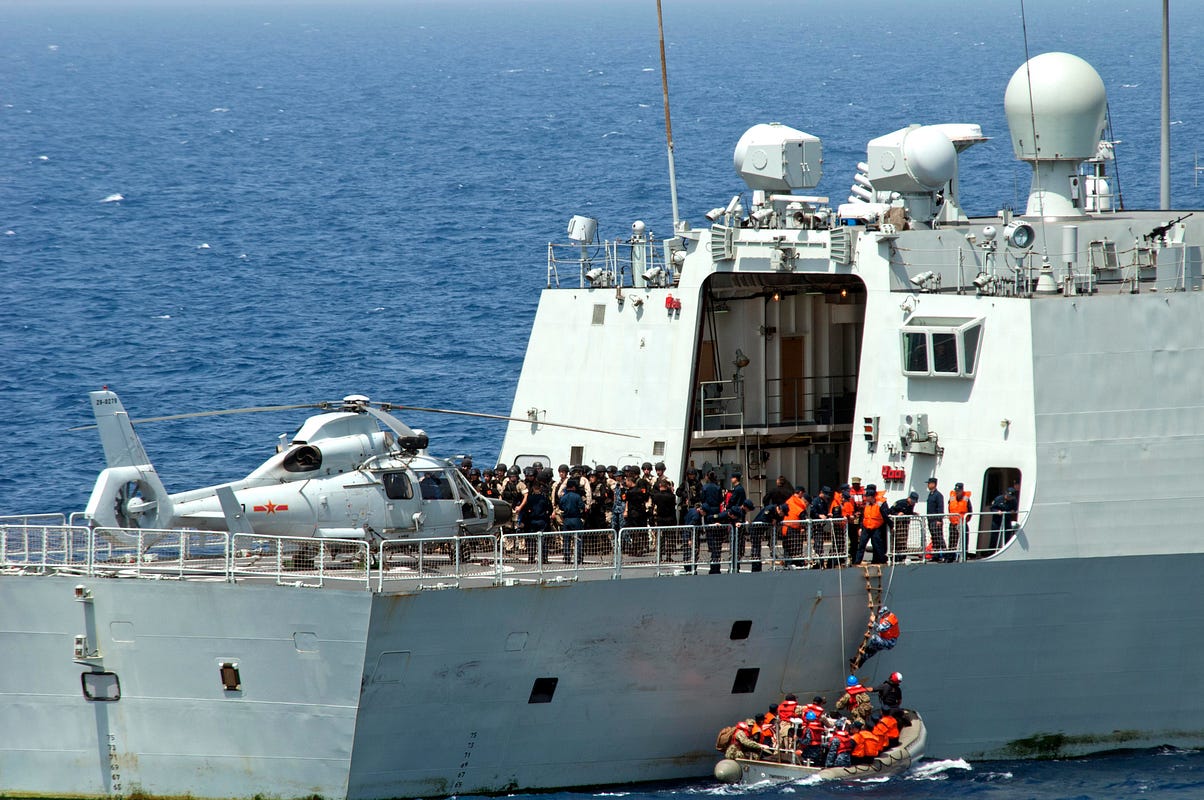 “It is a common practice for navies of all countries to have their submarines and ships replenished at certain intervals at ports,” Geng said.
“It is a common practice for navies of all countries to have their submarines and ships replenished at certain intervals at ports,” Geng said.
The Chinese naval vessel Yi Ying, part of the Gulf of Aden anti-piracy task force. U.S. Navy photo. At top— A Song-class submarine. SteKrueBe photo
But the port call sparked concerns even as far away as Japan. On Sept. 27, the Japanese Yomiuri Shimbun accused China of turning the Beijing-funded commercial port in Colombo into a naval base.
As it moves to secure its national interests in the region, Beijing faces increasing criticism that it is encircling India in a string of pearls—a series of bases providing access to otherwise off-limit seas.
To be sure, China has every reason in the world to do this. The country’s economy is dependent on the Indian Ocean’s vital sea lanes. Container ships and tankers carry oil and resources through these sea lanes on their way to China. In the other direction, Chinese goods flow out into the global marketplace.
Beyond Sri Lanka, Beijing is building maritime ties with the Seychelles, Mauritius, the Maldives, Bangladesh, Pakistan and Cambodia. It is not hard to imagine why the Indian Navy is beginning to feel caged in.
“We continuously monitor them, see what are their deployments, and what challenges they can pose for us,” Adm. Robin Dhowan, chief of the Indian naval staff, told the Times of India.
Beijing already informed New Delhi that a Type-093 Shang-class nuclear-powered attack submarine would begin patrolling the Indian Ocean. India worries that the next unwanted underwater patrol could feature the Type-094 Jin-class strategic nuclear submarine.
The latter are capable of firing as many as 16 ballistic missiles armed with three or four 250-kiloton nuclear warheads each.
The Chinese media have hit back against these concerns. On Oct. 1, in a segmentof CCTV4’s Focus Today, Du Wenlong of the People’s Liberation Army’s Academy of Military Science and Cao Weidong of the Naval Military Studies Research Institute sat down with presenter Xu Li to discuss Beijing’s naval activities in the region.
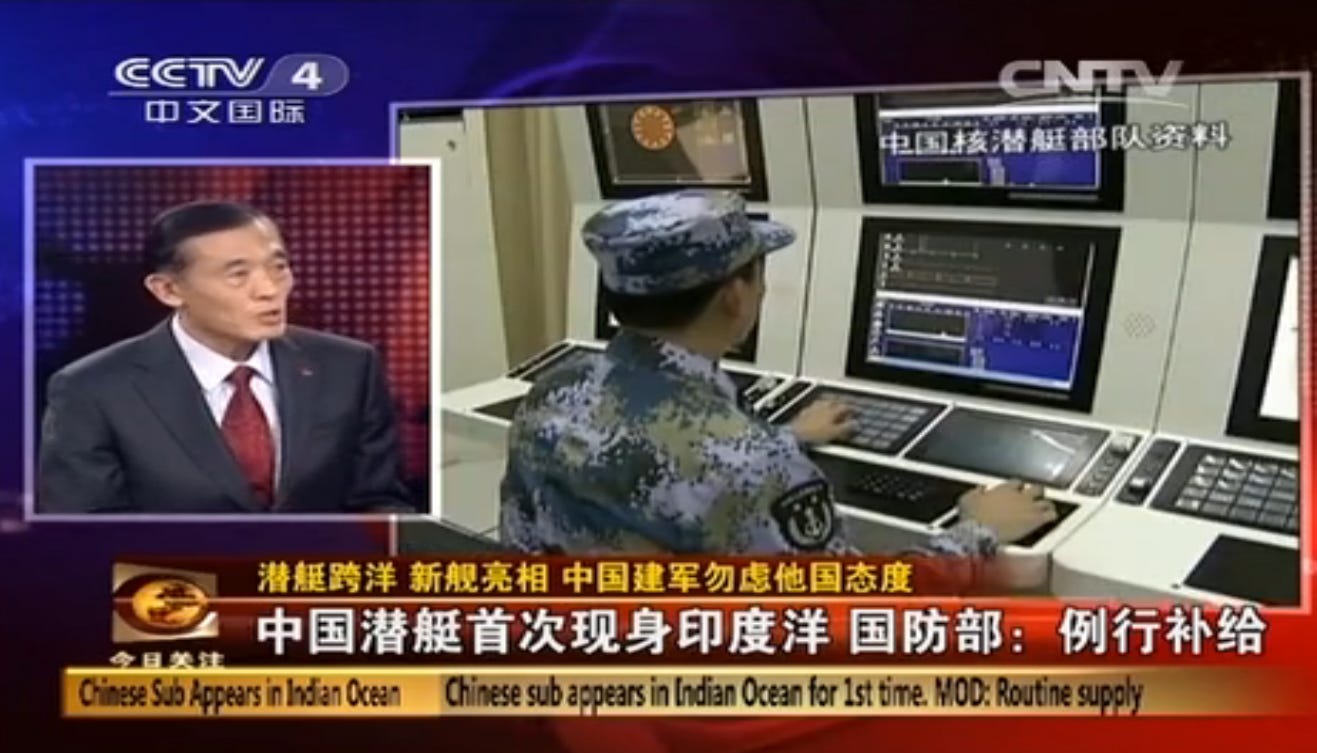 The experts delved into U.S. media coverage of the Jin-class submarine and discussed U.S., Russian and Chinese naval competition. They noted the development of America’s newest ballistic missile boat, the Ohio class. “Why is the West startled at PLAN’s sending sub for escort?” one graphic asked.
The experts delved into U.S. media coverage of the Jin-class submarine and discussed U.S., Russian and Chinese naval competition. They noted the development of America’s newest ballistic missile boat, the Ohio class. “Why is the West startled at PLAN’s sending sub for escort?” one graphic asked.
CNTV capture
The CCTV news program also showed activities inside Chinese submarines. This was a little weird, as it’s highly unusual for Beijing to share images of their most closely-guarded vessels.
Even more unusual, the program attributes the clips to China’s nuclear submarine force.
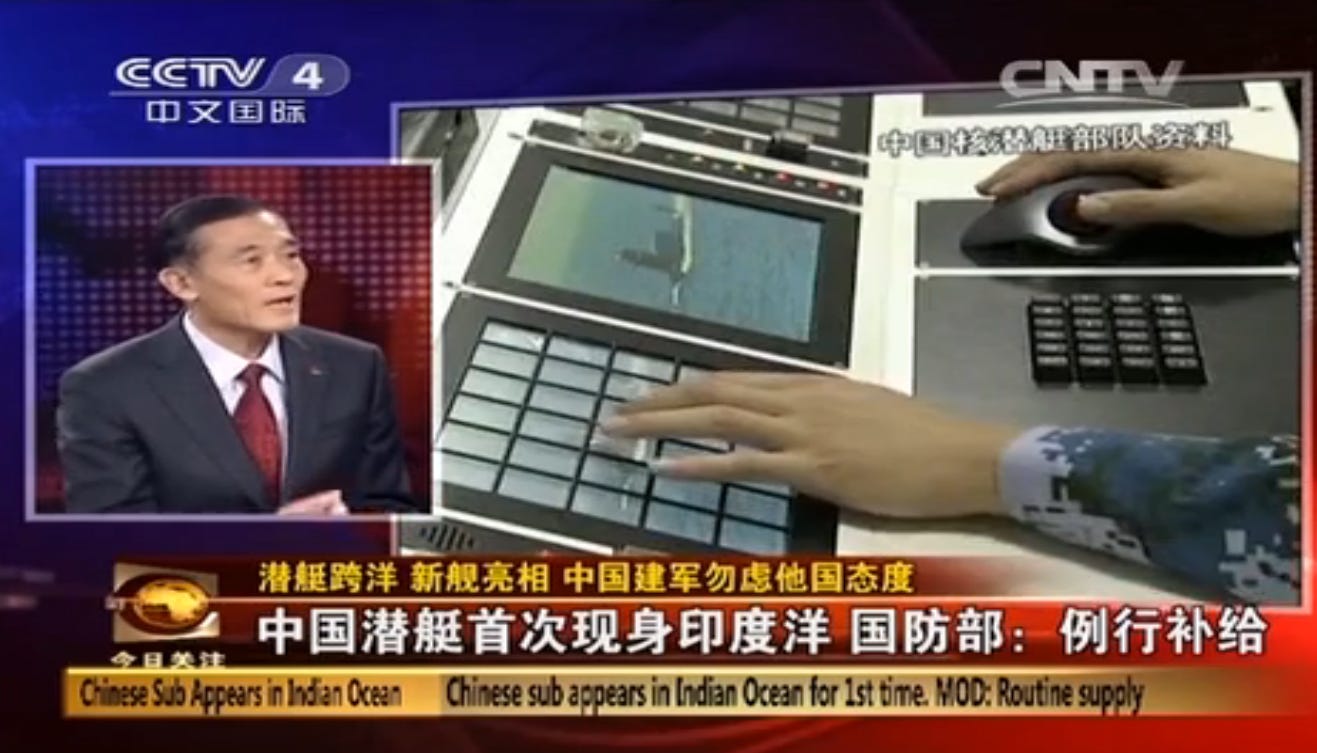 Most of the scenes are of button-pressing. The video panel touch-screen being used by the operator above features a few times in the segment. You can clearly make out the image of the submarine on the touch-panel matching the image on the display next to it.
Most of the scenes are of button-pressing. The video panel touch-screen being used by the operator above features a few times in the segment. You can clearly make out the image of the submarine on the touch-panel matching the image on the display next to it.
CNTV capture
The operator presses a few of the grid sections overlaying the panel—seemingly to no effect.
Of course, no submarine clip would be complete without an obligatory periscope shot. We are treated to two very different periscope columns.
A senior captain rotates around with a binocular scope surrounded by a variety of levers.

You can see the control panel for the same periscope below as it rises into position.
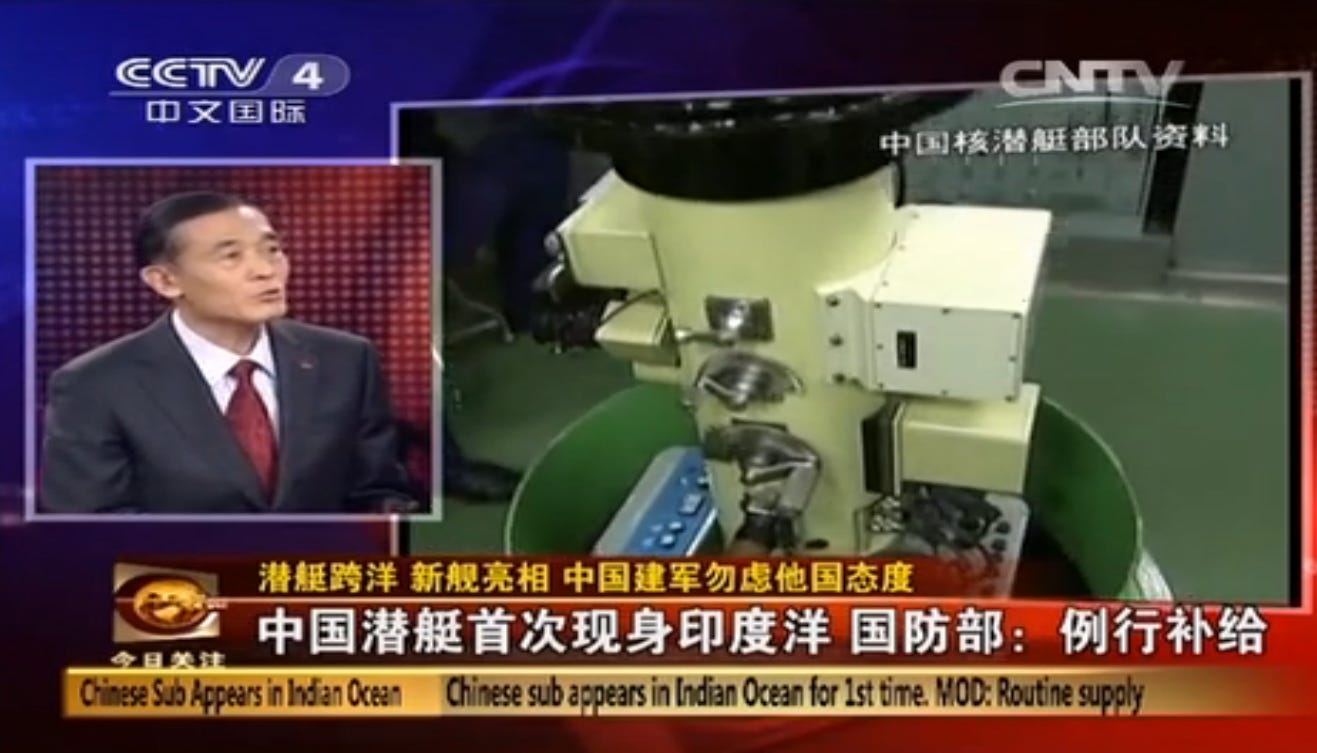
Another clip shows a commander working a very different scope. This monocular device also has a computerized display above the ocular.
Modern submarines typically come with two periscopes packing a variety of electro-optical sensors used to automatically help calculate the range and speed of enemy vessels.

Among a few of the external shots of submarines diving, cruising and firing torpedoes and sea-launched missiles, the clips show this blue dome retracting back into the hull.
Could this be a submarine’s electronic support measures mast?

And that’s all—unless you like to see clips of people pushing different buttons.

Or maybe twiddling with tubes.
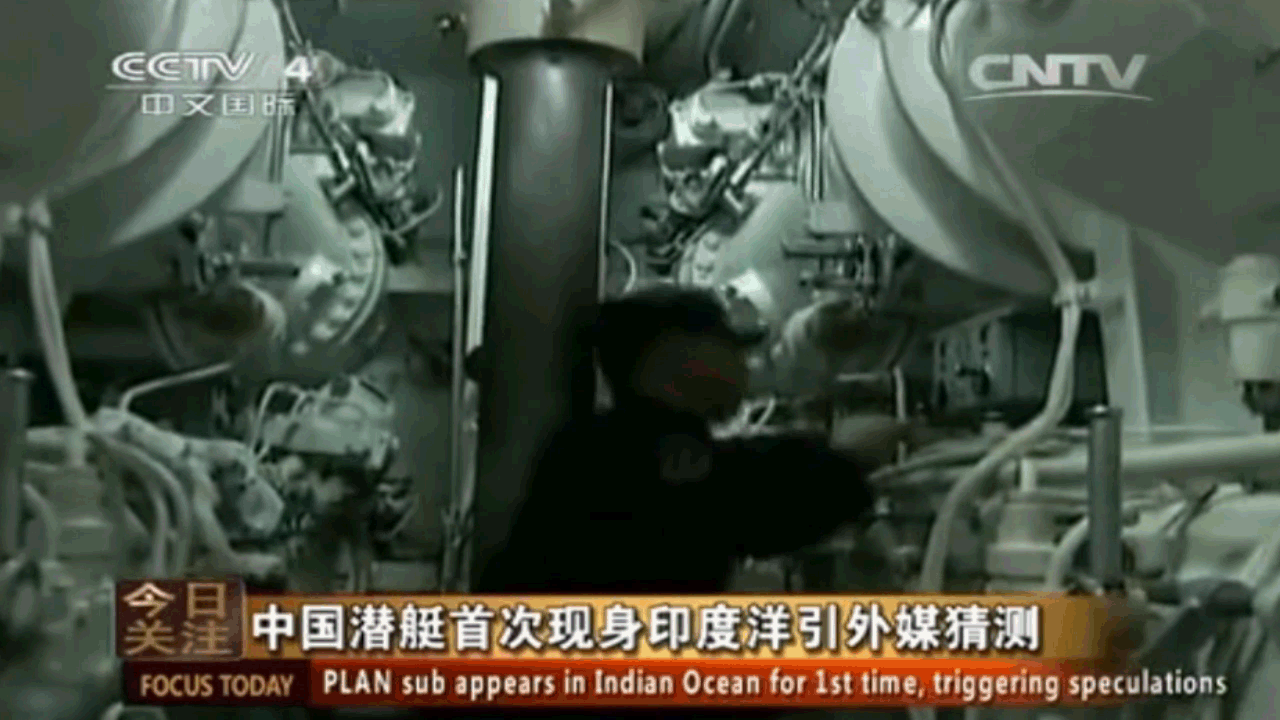
Or turning valve wheels.
The video is a clear reminder that despite the increasing integration of technological solutions, there’s still a lot of manual labor involved in the daily life of a submariner.
This brief look inside China’s strategic submarine force leaves us wanting more. The footage opened a small crack in the shutters that keep prying eyes away from Beijing’s prized boats.
But as China’s submarine activity matches the growing exposure of its media outlets, we can certainly look forward to more in the future. China’s continuing engagement in international missions off the coast of Somalia makes that ever more likely.


No comments:
Post a Comment